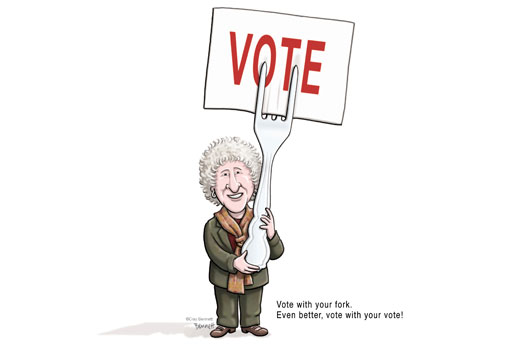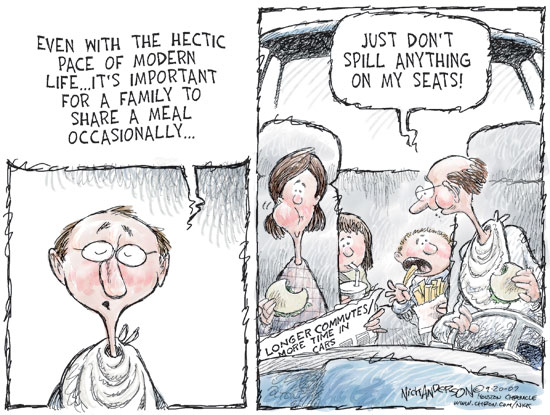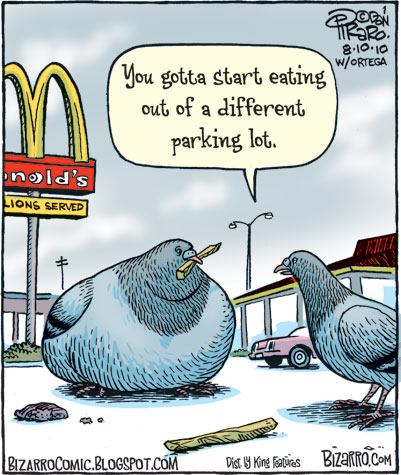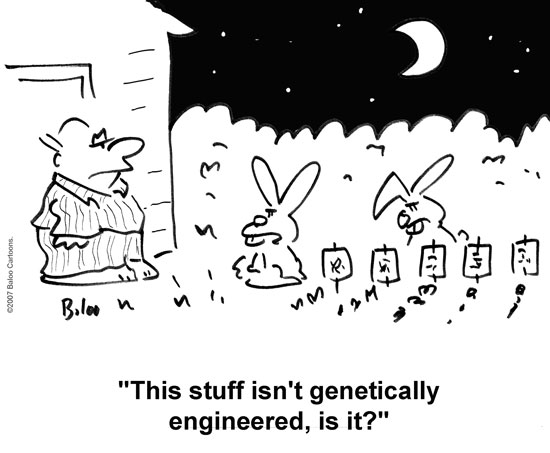 Excerpts from the new book Eat Drink Vote: An Illustrated Guide to Food Politics by Marion Nestle, PhD, MPH, Paulette Goddard Professor in the department of nutrition, food studies, and public health at New York University
Excerpts from the new book Eat Drink Vote: An Illustrated Guide to Food Politics by Marion Nestle, PhD, MPH, Paulette Goddard Professor in the department of nutrition, food studies, and public health at New York University
I have long believed that much of the excitement and enjoyment of studying food and nutrition derives from the complexity of the field and the many points of view that can be brought to bear on most aspects of research and practice in diet and health. Anyone interested in nutrition or food science—but also in history, sociology, anthropology, politics, biology, public health, medicine, law, or almost any other field of study—holds a legitimate stake in the issues debated in this book.
Indeed, anyone who eats holds such a stake. Debates about food and nutrition are personal as well as political. For that reason, I think they are especially interesting, entertaining, and useful.
CAPTION CONTEST: Write a Cartoon Caption, Earn a Chance to Win!
I hope that you will enjoy the different points of view and bring your own thoughts and opinions to food debates. I want these cartoons to inspire readers to become active in food politics and work toward a food system that is healthier for people and the planet. Join groups that are working on these issues. Vote with your fork! But food choices are also about politics. Exercise your democratic right as a citizen. Vote with your vote.
Here are three cartoons from the book, just a few of the 200-plus images from The Cartoon Group you’ll see in Eat Drink Vote.
Today’s Food Marketing Environment
 The prevalence of obesity in the United States began to rise sharply starting in the early 1980s. Since then, our food environment has changed in ways that encourage eating in more places, with greater frequency, and in much larger portions. In part, these changes in society happened as a result of the increasingly frantic pace of modern life.
The prevalence of obesity in the United States began to rise sharply starting in the early 1980s. Since then, our food environment has changed in ways that encourage eating in more places, with greater frequency, and in much larger portions. In part, these changes in society happened as a result of the increasingly frantic pace of modern life.
Why Food Production Matters
 But why do some people seem to gain weight more easily than others? Genetics is certainly a factor, but genetics has not had time to change since Americans began to put on weight in the 1980s. What did change was the food environment. Beginning in the early 1980s, food became more widely available.
But why do some people seem to gain weight more easily than others? Genetics is certainly a factor, but genetics has not had time to change since Americans began to put on weight in the 1980s. What did change was the food environment. Beginning in the early 1980s, food became more widely available.
Fast-food places proliferated. The sizes of food portions increased. People began to eat outside the home more often and to snack more frequently.
This is why obesity poses a particular challenge to cartoonists. They can quickly draw enormous bellies to illustrate the personal factors that contribute to obesity, but they find the environmental influences more difficult to characterize.
Genetically Modified Foods
 In Safe Food: The Politics of Food Safety, I explain the clashing viewpoints about GMOs as expressions of differing value systems—those based mostly on science (“GMOs are safe; therefore, they are acceptable”) as opposed to those that also include concerns about the cultural, religious, and political implications of the foods (“Even if GMOs are safe, they are not necessarily acceptable”). But one aspect of the GMO controversy is self-evident. In the United States at least, consumers do not have a choice. Genetically modified foods are not labeled.
In Safe Food: The Politics of Food Safety, I explain the clashing viewpoints about GMOs as expressions of differing value systems—those based mostly on science (“GMOs are safe; therefore, they are acceptable”) as opposed to those that also include concerns about the cultural, religious, and political implications of the foods (“Even if GMOs are safe, they are not necessarily acceptable”). But one aspect of the GMO controversy is self-evident. In the United States at least, consumers do not have a choice. Genetically modified foods are not labeled.
Order Eat Drink Vote from your favorite bookseller:
• Rodale Store
• Amazon
• Barnes & Noble
• IndieBound




Oh boy! This is SERIOUS stuff! So true, so very scary! Real life issues.